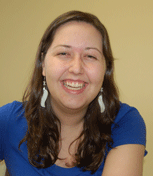My love for the Southwest did not occur at first sight. In fact, my first views of the region were startling; from an airplane I saw the red rock cliffs of New Mexico, a stark contrast to the lush greenery of New England to which I was accustomed. The landscape looked bare, almost sad. I mourned the luxurious, rolling grassy hills of the Berkshires, the blue-gray water of the Rhode Island coast, these flourishes of nature that were so familiar. By comparison, the Southwest seemed stripped-down, possessing only what it needed. But I would have to get used to it, as this region would be my home for the next year.
I was headed to St. Michaels, Ariz., a town on the Navajo reservation, with three fellow volunteers. We were recent college graduates and through the Mercy Volunteer Corps, an organization run by the Sisters of Mercy of the Americas, we had signed on as full-time volunteers to teach at a school for students with special needs.
M.V.C. volunteer communities are supposed to live lives founded on the principles of simple living, community, spirituality and social justice. Of course, we arrived with our own personal interpretations of these terms, but we did our best to move forward together. Our aim was to be conscious of one another within our shared home, to hold one another accountable for the choices we made, to support one another in the process and to be truly present and loving. It was not easy.
We each lived on $100 a month, so we had to strip away some material things that we clung to before. As members of a small community, we took seriously our responsibility to one another, knowing our lifestyle meant more than simply being roommates. Sometimes living in community meant making dinner when I wasn’t hungry or cleaning when I hadn’t made a mess. But at other times, it meant sharing evening prayer, going to Mass together or using our shared car to provide rides for neighbors.
As time went on, I began to recognize the lessons I was learning from community life in the desert landscape. On a day trip to the Grand Canyon one November weekend, when our attempted hike was thwarted by steep, ice-covered switchback trails, our lack of coordination and a line of pushy mules, we slid our way along the trail back to the rim of the canyon. We stood taking in the view, which left us in silence. Together, we were content to just be still, at the edge of the red and gold rock, as the canyon seemed to catch fire at sundown. I felt at once dwarfed by the sight and made stronger by it; it made me feel a part of something so much larger than myself.
The welcoming spirit of the Navajo people also made our transition to the simple life of a volunteer easier. We attended a dinner one evening at a co-worker’s home, a trailer amid burnt-orange rock formations. As the sky turned blue-black, dozens of people gathered outside around a few native dancers wearing traditional clothing and colorful shawls and pounding the earth with quiet footsteps.
I sat on the dusty ground just beyond the pool of light in which the dancers moved, listening to songs sung in Navajo to the beat of a drum. I didn’t understand the words, but each beat sounded to me like a heartbeat, a call to love, as I looked up at a sky unimaginably dark and yet bright with stars. And in that moment, I loved the community beside me, the earth below me and the One who created it all. The landscape no longer seemed bare, but full of the evidence of God, whose work I too easily allowed myself to ignore when it did not suit my tastes. I was, finally, truly present. And a passage from Hosea came to mind: “I will lead her into the desert and speak to her heart.”








